Oxbow Books is a leading publisher in the fields of archaeology, ancient history and medieval studies, with an international reputation for quality and affordability. Oxbow's archaeology publishing covers all periods from earliest prehistory through classical archaeology, the ancient Near East, Egyptology, the Middle Ages and post-medieval archaeology. They publish a wide variety of books including scholarly monographs, edited collections of papers, and excavation and research reports in related fields such as archaeological practice and theory, archaeozoology, and environmental, landscape and maritime archaeology.
Founded in Oxford in 1983 by academic and museum archaeologist, David Brown, Oxbow Books has evolved and expanded significantly over the years. Now celebrating their 40th anniversary, Oxbow remains dedicated to the quality of their publishing for readers, and the contribution their books bring to the scholarly and professional communities more broadly.

Format: Paperback
Pages: 160
ISBN: 9781785703997
Pub Date: 31 Aug 2016
Series: Proceedings of the 9th ICAZ Conference
Description:
This, the final title to be published from the sessions of the 2002 ICAZ conference, focuses on the role of man's best friend. As worker or companion, the dog has enjoyed a unique relationship with its human master, and the depth and variety of the papers in this fascinating collection is a testament to the interest that this symbiotic arrangement holds for many scholars working in archaeology today. The book covers an eclectic range of subjects, such as considering dogs as animals of sacrifice and animal components of ancient and modern religious ritual and practice; dogs as human companions subject to loving care, visual/symbolic representation, deliberate or accidental breed manipulation; as working dogs; and finally as co-inhabitors of uman dwelling paces and co-consumers of human food resources.
While many of the papers in this volume have a predominant focus, they also demonstate that the relationships between humans and dogs are rarely, if ever singular or simple. Instead these relationships are complex, often combining the practical, the ideological and the symbolic.
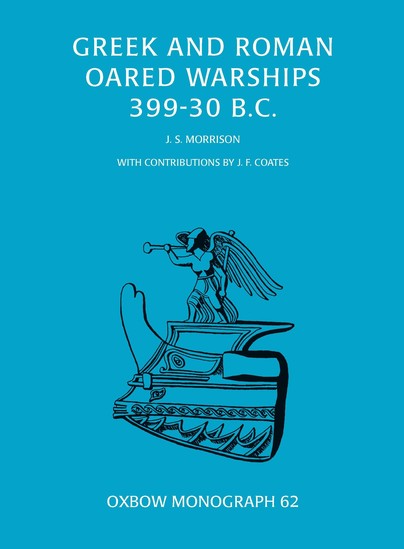
Format: Paperback
Pages: 420
ISBN: 9781785704017
Pub Date: 31 Aug 2016
Series: Oxbow Monographs
Description:
This is an important study of the new types of warships which evolved in the navies of the Mediterranean in the 4th and 3rd centuries BC, and of their use by Greeks, Phoenicians and Romans in the fleets and naval battles in the second and first centuries, culminating in the Battle of Aktion. The book includes a catalogue and discussion of the iconography of the ships with over fifty illustrations from coins, sculptures and other objects. John Coates discusses reconstructions, crews, ships and tactics illuminated by the recent experiments with the reconstructed trireme Olympias .
Complete with gazetteer, glossary, bibliography and indexes.

Format: Paperback
Pages: 225
ISBN: 9781785704000
Pub Date: 31 Aug 2016
Series: Archaeology of Mediterranean Landscapes
Description:
Nineteen essays present wide-ranging approaches to environmental reconstruction across Mediterranean Europe with case studies from southern and central France, central Italy, Spain, Greece, Slovenia and Turkey. It is Volume Two in the Archaeology of Mediterranean Landscapes series, which published five volumes as part of the POPULUS Project which aimed to establish a series of research goals and standards in Mediterranean landscape archaeology, so as to advance the study of ancient demography of the region on a broad comparative front.

Format: Paperback
Pages: 436
ISBN: 9781785703980
Pub Date: 31 Aug 2016
Description:
The main source of archaeological evidence for Late Roman Republican camps is a complex of installations around the Iberian city of Numantia in Spain, excavated by Adolf Schulten in the early 1900s. This book reassesses Schulten and concludes that much of his interpretation is questionable. Radically different alternative reconstructions making use of recent fieldwork are presented for several of the sites.
A discussion of dating evidence leads to alternative dates being offered for some of the camps. To aid interpreting the sites, army organisation and art of encampment for the period of the Numantine Wars is discussed. This study gives added importance to the sites at Numantia, for they not only form the main source of archaeological evidence for Late Republican camps, but provide evidence for the form of camp for both the late manipular army and the early cohort one.

Format: Paperback
Pages: 168
ISBN: 9781842173299
Pub Date: 31 Aug 2016
Series: Current Research in Egyptology
Description:
The Eighth Annual Current Research in Egyptology Symposium (CRE 2007) was held at Swansea University on the 19th-21st April. The conference brought together graduate and postgraduate students of Egyptology from ten different countries, contributing to a total of 40 presentations. The range of topics included art and architecture, archaeology, literature and language, history and society as well as scientific analysis spanning the entire epoch of Egyptian history from the Predynastic to the Coptic era.
The papers presented in the following volume represent a diverse range of topics and multidisciplinary approaches.

Format: Hardback
Pages: 480
ISBN: 9781785702273
Pub Date: 31 Aug 2016
Series: Celtic Studies Publications
Description:
The Celtic languages and groups called Keltoi (i.e. ‘Celts’) emerge into our written records at the pre-Roman Iron Ag

Format: Hardback
Pages: 352
ISBN: 9781785702235
Pub Date: 31 Aug 2016
Illustrations: 270
Description:
Art in England fills a void in the scholarship of both English and medieval art by offering the first single volume overview of artistic movements in Medieval and Early Renaissance England. Grounded in history and using the chronology of the reign of monarchs as a structure, it is contextual and comprehensive, revealing unobserved threads of continuity, patterns of intention and unique qualities that run through English art of the medieval millennium. By placing the English movement in a European context, this book brings to light many ingenious innovations that focused studies tend not to recognize and offers a fresh look at the movement as a whole.
The media studied include architecture and related sculpture, both ecclesiastical and secular; tomb monuments; murals, panel paintings, altarpieces, and portraits; manuscript illuminations; textiles; and art by English artists and by foreign artists commissioned by English patrons.
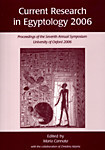
Format: Paperback
Pages: 191
ISBN: 9781842172629
Pub Date: 31 Aug 2016
Series: Current Research in Egyptology
Description:
The Seventh annual Current Research in Egyptology Symposium (CRE 2006) was held on 6-8 April 2006, at the University of Oxford, and brought together graduate and postgraduate students of Egyptology from institutions world-wide. A total of 44 students presented their new and on-going research on a variety of topics including archaeology, art and architecture, history and society, literature and language, religion, museum studies, scientific analysis, history of Egyptology and 'egyptomania,' spanning the entire period of Egyptian history from Predynastic to Coptic times. The papers published here cover the same wide range of research areas and multi-disciplinary approaches.
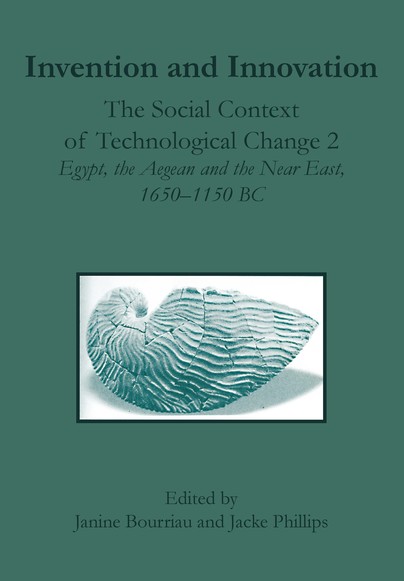
Format: Paperback
Pages: 220
ISBN: 9781842171509
Pub Date: 15 Aug 2016
Description:
In September 2002, a second workshop on the theme of the social context of technological change was held at the McDonald Institute for Archaeological Research, University of Cambridge. Discussion has been the core of these meetings so far, with the aim being to relate the results of the specialist investigator to broad historical questions concerning the nature and development of ancient societies. The papers presented here address a wider context: geographically, with the inclusion of the Aegean and thematically, with papers on natural products and raw materials.
The time frame remains the same in covering the Late Bronze Age/New Kingdom. The majority of the papers draw on Egyptian evidence, and illustrate a multiplicity of approaches to the problems set by ancient technologies: modelling, methodology of art history and archaeology applied to a problematic group of artefacts, integration of archaeological and textual sources, and the application of the results of scientific analysis to illuminate ancient technology.

Format: Paperback
Pages: 248
ISBN: 9781900188159
Pub Date: 15 Aug 2016
Illustrations: 165 figs
Description:
Report on the rescue excavations of an Anglo-Saxon cemetery discovered during 1974/5. Full catalogue of some 150 graves - mostly of the sixth century AD - and of the jewellery, weapons and other objects found with them. Fully illustrated catalogue of the finds and a discussion of them and their significance.
Numerous specialist reports.

Format: Paperback
Pages: 145
ISBN: 9781842173084
Pub Date: 15 Aug 2016
Illustrations: b/w illus
Description:
The port of Adulis was one of greatest significance in Antiquity. It is best known for its role in Aksumite trade during the fourth - seventh centuries AD. However it is also a major port of the Periplus of the Erythraean Sea , a sailors' hand-book of the first century AD.
Not only did it offer a good harbour on the route to India, but it was a source for luxuries such as ivory, tortoise-shell and rhinoceros horn. The site was first identified by Henry Salt, in 1810, but there have always been a number of problems, both chronological and topographical with the identification. Firstly, the surface pottery is late in date and accords with Aksumitic importance rather than the Roman. Secondly, Adulis is referred to as a port, but it is today 7 km from the sea. The Periplus refers to an island approached by a causeway, which suggested to some that the site was originally at Massawa, 60 km to the north, a town which today comprises islands connected by causeways. The work of Cosmas Indicopleustes 'Christian Topography' written in the 6th Century AD mentions two other places, Gabaza and Samidi, which have never been identified. The fieldwork on which this book is based resolves these issues. It is suggested that Roman Adulis underlies the Aksumite city. Also the pottery and structures on the Galala hills to the south, show that this was almost certainly 'the site of Aksumite Gabaza. However, off the seaward end of the hills is a rock which would have been a small island in Roman times and on it was a scatter of 1st century AD Roman wine amphorae (Dressel 2-4). The Periplus tells us that ships used to moor of Diodorus Island which was connected to the mainland by a causeway, but was later moved to an island called Oreinê (hilly) for greater security. The latter can be none other than Dese which is the only hilly island in the area and on it field survey has located a fine harbour and an early Roman settlement. The remaining site, Samidi, has also been found, for 7 km north of Adulis are large stone mounds. Architectural fragments and fragments of human bone suggest that this may have been an impressive mausoleum, perhaps the burial place of the kings of Adulis.
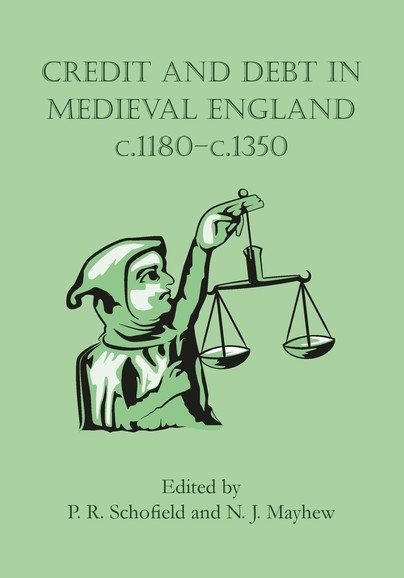
Format: Paperback
Pages: 200
ISBN: 9781842170731
Pub Date: 15 Aug 2016
Illustrations: 18 b/w figs, 17 tbs
Description:
The essays in this volume look at the mechanics of debt, the legal process, and its economics in early medieval England. Beneath the elevated plane of high politics, affairs of the Crown and international finance of the Middle Ages, lurked huge numbers of credit and debt transactions. The transactions and those who conducted them moved between social and economic worlds; merchants and traders, clerics and Jews, extending and receiving credit to and from their social superiors, equals and inferiors.
These papers build upon an established tradition of approaches to the study of credit and debt in the Middle Ages, looking at the wealth of historical material, from registries of debt and legal records, to parliamentary roles and statues, merchant accounts, rents and leases, wills and probates. Four of the six papers in this volume were given at a conference on 'Credit and debt in medieval and early modern England' held in Oxford in 2000. The other two papers draw upon new important postgraduate theses. Contents: Introduction (Phillipp Schofield) ; Aspects of the law of debt, 1189-1307 (Paul Brand) ; Christian and Jewish lending patterns and financial dealings during the twelfth and thirteenth centuries (Robin R. Mundill) ; Some aspects of the business of statutory debt registries, 1283-1307 (Christopher McNall) ; The English parochial clergy as investors and creditors in the first half of the fourteenth century (Pamela Nightingale) ; Access to credit in the medieval English countryside (Phillipp Schofield) ; Creditors and debtors at Oakington, Cottenham and Dry Drayton (Cambridgeshire), 1291-1350 (Chris Briggs) .
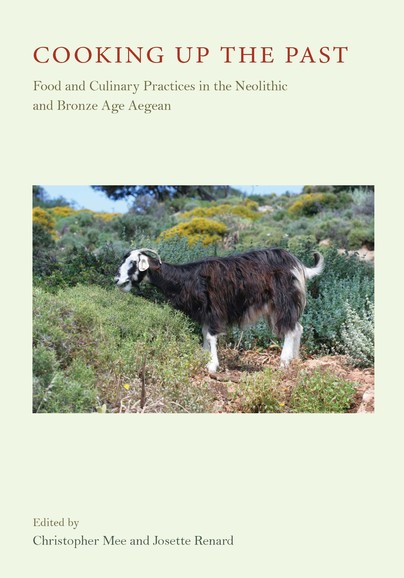
Format: Paperback
Pages: 400
ISBN: 9781842172278
Pub Date: 15 Aug 2016
Description:
This volume focuses on the ways in which the production and consumption of food developed in the Aegean region in the Neolithic and Early Bronze Age, to see how this was linked to the appearance of more complex forms of social organisation. Sites from Macedonia in the north of Greece down to Crete are discussed and chronologically the papers cover not only the Neolithic and Early Bronze Age but extend into the Middle and Late Bronze Age and Classical period as well. The evidence from human remains, animal and fish bones, cultivated and wild plants, hearths and ovens, ceramics and literary texts is interpreted through a range of techniques, such as residue and stable isotope analysis.
A number of key themes emerge, for example the changes in the types of food that were produced around the time of the Final Neolithic-Early Bronze Age transition, which is seen as a particularly critical period, the ways in which foodstuffs were stored and cooked, the significance of culinary innovations and the social role of consumption.
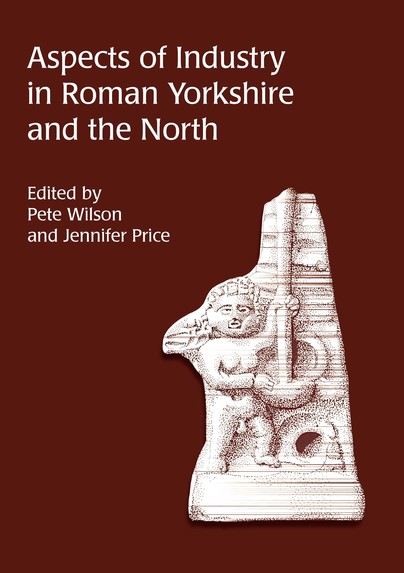
Format: Paperback
Pages: 160
ISBN: 9781842170786
Pub Date: 15 Aug 2016
Illustrations: 69 b/w figs, 3 tbs
Description:
At the frontiers of the Roman Empire, military settlements had a profound influence on local crafting traditions. Legions were not just fighting units - they contained a large number of craftsmen, and the fortress would have been a centre of manufacturing activity. A timber legionary fortress, for example, required vast numbers of nails, many of which would have been made by legionary smiths on site, and an army of thousands would require many more pots, shoes and tents than could be produced by local domestic potters and leather workers.
But can all developments in local craft and industry be seen as a result of the appearance of the Roman army? The ten papers in this volume focus on craft production in Roman Yorkshire, and the evidence for the role of the army in local manufacturing activities. Several papers examine broad questions surrounding the organisation and scale of production in urban and rural areas. Others consider the local evidence for individual materials and production processes, including those associated with pottery, glass, copper alloys, non-ferrous metals, leather, jet, and building stone.

Format: Hardback
Pages: 260
ISBN: 9781785701993
Pub Date: 31 Jul 2016
Description:
Modern borders of all kinds, political, geographical and social, effect the kinds of prehistoric narratives archaeologists can write. Borders that dominate today did not exist in prehistory. This volume works across such borders and focuses specifically on the region between the Rivers Forth and Tyne, an area divided by the modern political border between Scotland and England.
The introduction and opening chapters consider the impact of the Anglo-Scots and similar borders on our understanding of prehistoric patterns of activity. The introduction also asks whether, when, and to what extent this could be considered a coherent region in the prehistoric past. Further chapters explore the history of research in the region, including field survey and aerial photography. Another nine chapters discuss the results of recent research, including new and older excavations, or conduct regional analyses of artefacts and mortuary practices, starting with the Late Upper Palaeolithic and continuing with studies from the Early Neolithic through to the Late Iron Age. Taken as a whole, the publication suggests that while there was no coherent Tyne-Forth region in prehistory, except for perhaps in the Late Iron Age, research at this regional scale provides a strong basis for appreciating past cultural interaction at a variety of scales.

Format: Hardback
Pages: 816
ISBN: 9781785700262
Pub Date: 31 Jul 2016
Illustrations: black/white & colour illustrations
Description:
Between 1975 and 1984 almost the entire area of the Roman fort of Segedunum in Wallsend was excavated under the direction of Charles Daniels, senior lecturer in the Department of Archaeology at Newcastle University. It is these excavations which form the subject of this publication. This comprehensive report on the structural remains (Vol.
1) and finds (Vol. 2) show clearly that Daniels’ work represented one of the most ambitious and prolonged programmes of fieldwork attempted on the northern frontier up to that point and has made Wallsend one of the most fully investigated of Roman forts in Britain. In most areas the remains were not excavated down to natural and so the remains revealed were predominantly those of the 2nd and 3rd centuries, with some late Roman features. Volume 1 describes first the stratigraphic sequences and excavation of the stone and timber buildings of the fort’s central range: the granary, hospital, headquarters (principia), commanding officer’s house (praetorium), the forehall fronting the principia and granary, and a long narrow building, perhaps a workshop, on the north side of the eastern via principalis. In the case of all but the praetorium these buildings were fully exposed. Later chapters cover the buildings in the northern third of the fort, revealed to be a group of six infantry barracks which underwent several phases of rebuilding and refurbishment including partial replacment by a stable block. Parts 4 and 5 examine the cavalry barracks in the southern part of the fort (retentura) and excavations of sections of the fort defences on all four sides, particularly of discrete structures such as towers and gates.Volume 2, on the predominantly 2nd–3rd century material culture from the site, looks at the stonework, pottery, coins and small finds recovered. The stonework and ceramic building material provides information on the appearance of the fort and include a very rare stone latrine seat and a bench support. The pottery comprises samian, mortaria, including a large collection stamped by Anaus, amphorae and coarse wares. Other clases of artefact occur in comparatively small numbers, including colourless glass tablewares of the second and third centuries, 295 coins and c. 1000 small finds including some post-Roman pieces. Finally there is a detialed assessment of animal bone assemblages from a cistern and the Commanding Officer’s house.


















